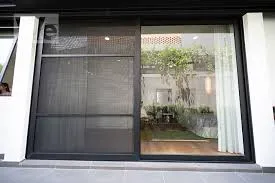-
+86 15030157877
-
sales@galvanizedmetalmesh.com
Dis . 19, 2024 05:39 Back to list
poultry fencing
A Comprehensive Guide to Poultry Fencing
Poultry farming is a rewarding endeavor, offering the dual benefits of productivity and connection to nature. However, one of the critical aspects of successful poultry farming is ensuring the safety and security of the birds. This is where poultry fencing comes into play. Proper fencing not only protects your flock from predators but also helps them maintain the health and hygiene required for optimum production.
Understanding the Importance of Poultry Fencing
The primary purpose of poultry fencing is to create a safe environment for chickens, ducks, turkeys, and other poultry
. Birds are often preyed upon by various animals, including raccoons, foxes, coyotes, and even domestic pets. A well-installed fence acts as a barrier against these threats, allowing your birds to roam safely and enjoy their space.Moreover, fencing contributes to the health of your flock. It helps prevent the spread of diseases by restricting uninvited guests, such as wild birds and rodents, from mingling with your poultry. These animals can carry diseases that could decimate your flock if introduced to your chickens. By controlling access to your poultry area, you also reduce the risk of injury and stress, contributing to healthier and more productive birds.
Types of Poultry Fencing
There are various types of fencing materials available for poultry, each with its own advantages and disadvantages. Here are some of the most common options
1. Chicken Wire This is one of the most popular choices for poultry fencing. Chicken wire is affordable and relatively easy to install. It provides a decent level of protection against most small predators. However, it may not be effective against larger animals like raccoons or foxes, as they can easily tear through the wire or dig under it.
poultry fencing

2. Welded Wire Fencing This type of fencing consists of heavier gauge wire and is more durable than chicken wire. It can withstand the efforts of larger predators and offers better protection. While it is more expensive than chicken wire, the investment is often worth it for those looking for long-lasting efficacy.
3. Electric Fencing For those living in areas with significant predator pressure, electric fencing can serve as an effective deterrent. It works by delivering a mild shock to animals that attempt to breach the fence. This type of fencing requires a reliable power source and regular maintenance to ensure it functions properly.
4. High Tensile Wire Fencing This fencing option is robust and sturdy, making it suitable for larger setups. It requires proper installation, including posts placed at intervals, and may involve more initial labor. However, it offers excellent longevity and can effectively ward off larger predators.
5. Combination Fencing Some poultry farmers opt for a hybrid approach, combining different types of fencing to maximize protection. For example, you might use welded wire fences complemented by electric fencing to create a secure environment.
Installation and Maintenance
Regardless of the fencing type chosen, proper installation is crucial for effectiveness. The fence should be at least 4 to 6 feet high to deter most predators, and it’s advisable to bury the bottom few inches of the fence underground to prevent digging. Regular maintenance is equally important, as wear and tear can weaken the fence over time. Inspecting your fence for gaps, holes, or damage should be part of your regular farm routine.
Conclusion
Poultry fencing is an essential investment for anyone involved in poultry farming. It safeguards your flock from predators, enhances their health, and ensures that you can enjoy the benefits of your labor without constant worry. Whether you choose chicken wire, welded wire, electric fencing, or a combination, be sure to consider your specific needs, local predator pressures, and budget. A well-fenced poultry area not only means healthier birds but also a more productive and peaceful farming experience. So, equip yourself with the right tools and knowledge and take the essential steps towards safeguarding your poultry today!
-
Welded Gabion Solutions: Durable & AI-Enhanced Designs
NewsAug.01,2025
-
Premium Welded Gabion Mesh | Robust & Eco-Friendly
NewsJul.31,2025
-
Premium Eco-Friendly Roof Tiles | Affordable & Durable
NewsJul.31,2025
-
Premium Roof Tiles for Durable & Stylish Roofing Solutions
NewsJul.30,2025
-
High-Quality Roof Tiles for Durable & Stylish Roofing Solutions
NewsJul.29,2025
-
High Quality Square Wire Mesh Manufacturer & Supplier for Wholesale
NewsJul.29,2025



